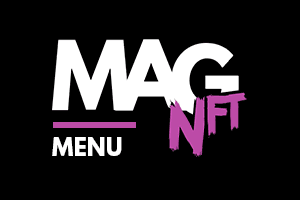Questions around NFTs vs Crypto are getting more heated as these technologies go mainstream. NFTs have made headlines for record-breaking sales like Pak’s NFT, The Merge, which he sold for $91.8 million in December 2021. Cryptocurrencies are also changing global finance offering decentralized alternatives to traditional monetary systems. Let´s break down the difference between NFTs and cryptocurrencies, the underlying tech, real-world use cases, and their future potential.
What are Cryptocurrencies?
Cryptocurrencies are virtual or digital currencies secured by cryptography to offer secure and decentralized transactions. Bitcoin was the first cryptocurrency introduced in 2009 and has since grown into a multi-trillion-dollar industry. Now Bitcoin and Ethereum are widely recognized and used.
Cryptocurrencies are fungible – a liquid currency where each token is identical in value. Cryptocurrency can be seen as a digital version of a real-world currency, such as USD or GBP.
Unlike traditional currencies issued by central authorities, cryptocurrencies run on decentralized networks based on blockchain technology, a distributed ledger supported by a network of computers. This decentralization makes them theoretically immune to government control or manipulation.
While cryptocurrencies are used as digital money to facilitate transactions and as a store of value, their use cases have expanded over time. For example, Ethereum introduced smart contracts to allow decentralized applications to run on its blockchain.

Key Characteristics of Cryptocurrencies
- Fungibility – Each unit of a cryptocurrency is interchangeable with another. For instance, one Bitcoin is the same as another Bitcoin in value and utility making cryptocurrencies great for transactions and as a store of value.
- Divisibility – Cryptocurrencies can be divided into smaller units. Bitcoin for example can be divided into up to 8 decimal places with the smallest unit called a satoshi.
- Decentralization – Crypto runs on decentralized networks removing the need for intermediaries like banks. The Blockchain technology behind it ensures transparency and immutability of transaction records.
- Borderless Payments – Crypto enables fast cross-border transactions often at a fraction of the cost of traditional banking systems.
- Investment Opportunities – Cryptocurrencies have become an investment asset class. With the introduction of Bitcoin ETFs and institutional adoption, crypto are being added to mainstream financial portfolios.
What are NFTs?
NFTs are non-fungible – each token is unique, and therefore has differences in value. They are stored on a blockchain and representing ownership of items like art, music, or video clips. Unlike traditional assets, each NFT is distinct and can’t be exchanged one to one. This uniqueness is like owning a rare collectible where no two are the same.
NFTs are not a type of cryptocurrency. NFTs are a digital asset that can be purchased with cryptocurrency.
NFTs are indivisible meaning they can’t be broken down into smaller units like crypto (except fractionalized NFTs) and can only be owned by one person or entity at a time. This indivisibility ensures the ownership and authenticity of the digital asset.
The blockchain technology behind NFTs provides a secure and transparent way to prove ownership making it a great solution for digital artists and creators to monetize their work.
Ethereum is the most well-known blockchain for NFTs. $ETH, the cryptocurrency of the Ethereum blockchain, is the most token used to trade NFTs.
Key Features of NFTs
- Non-Fungibility – Unlike cryptocurrencies, NFTs are distinct and can’t be exchanged one-to-one. For example, a piece of digital art sold as an NFT is unique and has its own value.
- Indivisibility – NFTs can’t be broken down into smaller units like crypto. Ownership is tied to the whole token – except fractional NFT.
- Ownership Verification – NFTs prove ownership of digital or physical assets like art, music, and virtual real estate.
- Smart Contracts – NFTs often include smart contracts so creators get automatic royalty payments on resale.
- Enhanced Interactivity – Some NFTs have interactive elements like evolving features based on user engagement making them more appealing to creators and buyers.
- Innovative Use Cases – NFTs are being used in real estate where they represent property deeds and in education to issue verifiable digital certificates for skills and qualifications.
NFTs vs Crypto: Core Differences
NFTs and crypto serve different purposes in the digital economy. This table highlights their core differences, helping you understand their unique roles.
| Aspect | Crypto | NFTs |
|---|---|---|
| Fungibility and Value | Each unit is identical and can be exchanged and used in transactions seamlessly. | Each token is unique and often has value based on rarity, creator, or demand. |
| Applications | Primarily for payments, investments, and DeFi applications. | For digital ownership of art, gaming assets, and virtual real estate. |
| Market Dynamics | Influenced by adoption, regulation, and economic conditions. | Driven by creativity, rarity, and demand in niche markets. |
| Technology Standards | Built on blockchain standards like ERC-20. | Use protocols like ERC-721 and ERC-1155 for uniqueness and metadata. |
How are they changing the ownership on the internet?
It is simple – both NFTs and cryptocurrencies are giving individuals direct control. By removing middlemen, they allow users to manage and own assets more freely. Blockchain adds trust by ensuring clear and verifiable transactions.
Digital assets make investing and owning more open to everyone, breaking down barriers and expanding opportunities for participation worldwide. NFTs let creators add unique details to their digital assets. This flexibility sets them apart from regular digital files, making each one one-of-a-kind. Finally, NFTs and crypto link physical and digital assets. Real-world items like real estate and luxury goods gain new value as they are tokenized and represented digitally.
Real-World Use Cases of Crypto and NFTs
In recent years, the number of cryptocurrencies has grown exponentially (around 32m according to coinmarketcap), unlocking a wide range of possibilities for how companies can leverage blockchain technology and their respective cryptocurrencies. Some key use cases include digital payments, decentralized finance (DeFi), gaming, supply chain management, and decentralized autonomous organizations (DAOs), among others.
Bitcoin as Digital Gold
One prominent use case is the role of Bitcoin as a store of value, often referred to as “digital gold.” With its supply capped at 21 million, Bitcoin is inherently scarce, which has contributed to its long-term value and appeal as a reliable asset over the years.
NFTs
- Art and Collectibles – The Merge $91.8 million NFT sale in December 2021 shows how NFTs are changing digital art ownership.
- Gaming and Virtual Real Estate – Platforms like Decentraland and Axie Infinity have integrated NFTs so that players can own and trade in-game assets.
- Ticketing for Events: NFTs are becoming popular as digital tickets for events like concerts, sports games, and festivals.
- Supply Chain and Provenance: NFTs are being used to track and verify the authenticity of physical goods. For example, luxury brands might issue NFTs for high-end products to ensure consumers that they are buying genuine items.

What is the future for Crypto and NFTs?
In summary, both cryptocurrencies and NFTs represent groundbreaking advancements in digital ownership and financial systems, with unique yet complementary roles. Cryptocurrencies, driven by Bitcoin and Ethereum, have achieved remarkable growth, reaching a market cap of almost $4 trillion in 2024. Meanwhile, NFTs, with a trading volume of around $9 billion in the same year, are reshaping the way we think about ownership, offering customization, transparency, and accessibility in sectors like art, gaming, and metaverse.
Future trends point to mass adoption, regulatory clarity, and deeper integration with AI and metaverse platforms. Efforts in interoperability and growing community governance through DAOs are further enhancing their utility.
FAQs
Is NFT a cryptocurrency?
NFTs are not cryptocurrencies. Cryptocurrencies like Bitcoin and Ethereum are fungible, meaning each unit holds the same value and can be easily exchanged. NFTs, on the other hand, are non-fungible, making each token unique with its own specific value. While cryptocurrencies are primarily used for transactions and investments, NFTs are designed to represent ownership of unique digital or physical assets.
What is the difference between NFTs and cryptocurrencies?
The main difference lies in fungibility. Cryptocurrencies are interchangeable, with each unit holding the same value, making them ideal for payments and investments. NFTs are unique and cannot be exchanged one-to-one. Cryptocurrencies use blockchain standards like ERC-20, while NFTs rely on protocols such as ERC-721 or ERC-1155, which allow for uniqueness and additional metadata to define each token.
Are NFTs an investment like crypto?
NFTs can serve as investments, but their value depends on factors like rarity, creativity, and dema
NFT Basics
- What is a Non-Fungible Token?
- NFTs vs Crypto: Key Difference
- Common NFT Terms
- What gives an NFT its value?
- How Do I Purchase an NFT?
- How Do I Pick an NFT to Buy?
- How Do I Trade an NFT?
- Is It Hard to Sell an NFT?
- How Do I Exchange an NFT for Cash?
- How Do I Make an NFT?
- How Do I Find the Rarity of an NFT?
- How Do I Earn Money from NFTs?
- What can an NFT holder do?
- Why do collectors buy NFTs?
- Can NFTs be a good investment?
- How Do I Avoid NFT Scams?
- How Do I Know if an NFT Is Real?
- Will NFTs last?
- What Are the Biggest NFT Collections?
- What was the first NFT minted?






